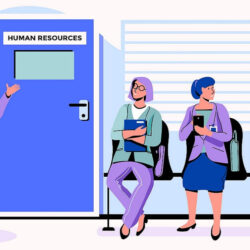Education plays an important role in human capital formation because it increases a society’s productivity and prosperity. Education allows a person to develop human capital, which includes skill, knowledge, and wisdom. The significance of human capital formation cannot be overstated, and it has traditionally served as the pivot for all forms of developmental outcomes. We’ve talked about the role of education in the formation of human capital. In this post, we are sharing the information details about What is The Role of Education in Human Capital Formation.
What is The Role of Education in Human Capital Formation
How to define human capital formation: A country can convert physical resources such as land, minerals, and water power into physical capital such as factories, power plants, dams and reservoirs, and so on. We need good human capital to run physical resources. The country, like physical capital, can convert human resources such as students into human capital such as engineers, doctors, administrative officers, scientists, architects, teachers, and so on. Human capital is required to develop and manage both physical and human capital. Human capital, such as knowledge, skills, expertise, and experience, represents the country to the rest of the world. These individuals benefit society and the nation. We need a good human capital and a well-structured human capital formation system to run a country well.
Also Read: Risks of Hiring a Private Investigator: 20 Things You Should Know
Human capital formation is the long-term development of a person’s skill, ability, expertise, and knowledge. Quality education, good health, and well-behaved communication are all visible manifestations of well-formed human capital. Human capital formation aids a country’s economic and political development.
What Factors Influence Human Capital Formation?
Human capital must be well-equipped. Human capital utilisation is a boon to humanity. So, what factors contribute to the formation of human capital? Human Capital Formation is comprised of five sources or factors:
Investment in Education: An educated person is a valuable asset to a country and is capable of putting forth more effort for the betterment of society. On the other hand, more efficient labour contributes to a nation’s economic growth. With the addition of education, labour becomes more efficient or skilled. Individual education spending enables the development of human capital in that person, which helps that person increase labour productivity and efficiency. That is why investing in education is just as effective as investing in physical capital.
- A person’s social standing improves as a result of education.
- Education enables a person to make better life decisions.
- Education imparts knowledge.
- Education enables people to innovate and invent.
- Education makes people curious, which gives them the ability to question.
Investment in Health: A healthy person can provide more workforce than an unhealthy person. Education encourages the expansion of knowledge. Knowledge enables one to obtain better job opportunities with higher pay, which can then be spent on healthy foods. Healthy foods improve one’s health. It also contributes to the creation of a healthy environment. A healthy lifestyle necessitates the availability of medicines, safe drinking water, and adequate sanitation.
Giving On-the-Job Training: Different types of jobs require different types of abilities to pursue. An educated person can increase his or her employability by obtaining on-the-job training.
Investment for Migration: Everyone requires employment. People leave their home countries in search of higher-paying jobs. In India, rural-urban migration is motivated by unemployment and better job opportunities. The cost of transportation, living expenses, and psychological costs associated with a new socio-cultural setup are all included in the cost of migration. As a result, migration expenditure becomes a source of human capital formation.
Investment in Information: Knowledge is essential for performing a job. A steady supply of information fosters intelligence. People invest a lot of time and money in learning about their jobs, society, and lifestyle. This data assists in making decisions regarding human capital investment and efficient utilisation. Thus, information expenditure is a source of human capital formation.
The Importance of Human Capital Formation
- Proper Use of Physical Capital: Increases in physical capital productivity are heavily reliant on human capital. People who are educated, skilled, experienced, and healthy make better use of physical capital and increase capital productivity.
- Inventions, Innovations, and Improvement: Human capital formation can spark inventions that lead to labour-saving innovations. Education also develops human capital and the ability to absorb new technological advances.
- Improvement in Quality of Life: Human capital formation increases people’s life expectancy. People who are educated and in good health can live happy life.
- Population Growth Control: Many studies have shown that educated people have smaller families than uneducated people. As a result, it is believed that education can control a country’s population growth rate.
The Connection Between Human Capital and Economic Growth
What exactly is economic growth? Economic growth is measured by a country’s increase in per capita income or increase in per capita availability of goods and services.
Human Capital Formation’s Role in Economic Growth
Human capital formation and a country’s economic growth are inextricably linked. Education assists a person in developing human capital such as skill, excellence, and experience, which is then applied in the workplace. In exchange for his labour, the individual earns money and receives other benefits. The earnings are used to purchase necessities. As a result, the money circulates in society and contributes to a country’s economic growth. The following sections discuss how human capital formation contributes to a country’s economic growth:
- A healthy person can contribute to economic growth more than an illiterate person by providing an uninterrupted labour supply.
- Human capital formation not only increases human resource productivity but also stimulates innovation and the ability to absorb new technologies.
- Education provides knowledge to comprehend societal changes and scientific advancements, thereby facilitating inventions and innovations.
- The availability of a skilled labour force makes it easier to adapt to new technologies.
The distinction between physical and human capital
Both physical and human capital are the results of deliberate investment decisions based on one’s knowledge. Physical capital formation is an economic and technical process in which an owner owns something. Men, women, and children can all benefit from various types of education and health care. Educators and societal influencers have made decisions about human capital investments even at the tertiary level to ensure long-term action for human capital transformation. Furthermore, human capital formation is dependent on previously formed human capital through school education.
Also Read: Ava Hiring Remote Jobs: Excellent Opportunities for WFH Job Seekers
Human capital formation is dependent on both the social process and conscious policy formulations in accordance with the nature of the society and economy, as well as expenditures made by the state and individuals for the process of human capital formation. Human capital is an intangible sense that develops endogenously in the body and mind. Physical capital, on the other hand, is tangible and can be easily bought and sold in the market as a commodity. Furthermore, physical capital can be created with the assistance of human capital. Everything gets old with the passage of time. With age, both physical and human capital depreciates.
Human Capital’s Role in the Development of the Indian Economy
Education and economic growth in India are interdependent. Economic growth is defined as an increase in a country’s real national income. The contribution of an educated person to a country’s economic growth is greater than that of an uneducated person. If a literate, healthy person can provide an uninterrupted labour supply for a longer period of time, then health, in addition to literacy, becomes an important factor for economic growth. As a result, all of the factors mentioned above, such as education, health, on-the-job training, job market information, and migration, not only increase labour productivity but also stimulate innovation and create an ability to absorb new technologies. Education provides knowledge to understand societal changes and scientific advancements, which enable inventions and innovations to increase human capital. However, empirical evidence of economic growth through human capital expansion is hazy.
In India, the ministry of education, various departments of education, and organisations such as the National Council of Educational Research and Training (NCERT), University Grants Commission (UGC), and All India Council of Technical Education (AICTE) support educational infrastructure institutions. However, a sizable portion of India’s population cannot afford both health care and higher education. Furthermore, if basic education and health care are considered a citizen’s right, the government must provide these services at no cost to deserving citizens. Both the federal and state governments have increased education spending in recent years in order to achieve a 100% literacy rate and increase average educational attendance.
Since the 1950s, the central and state governments of India have been funding the development of educational infrastructure. At the moment, India has one of the world’s largest education networks. This infrastructure makes it possible for a large number of students to attend school. This strong educational infrastructure has provided quality manpower to resources in the developing economy. The Indian Central Government recognised the importance of education in the development of human capital in the Indian economy and took appropriate action in the Seventh Five-Year Plan (1985–1990). Initially, public expenditure in the educational sector was 1.52% of GDP in 1961-62, rising to 3.68% in 2004-05. According to NSSO data from 2011-12, the rate of unemployment among graduate and post-graduate youth males in rural areas was 19%. Their urban counterparts had a 16% unemployment rate. Young rural female graduates are disproportionately affected. Around 30% of them are unemployed. In contrast, only about 3-6 per cent of young people with primary education in rural and urban areas were unemployed. After 1968 and 1986, the Union Government of India introduced the National Education Policy in 2020 with the goal of making India a global knowledge superpower.
Education Spending in India
This government spending is expressed in two ways: as a percentage of “total government spending” and as a percentage of GDP (GDP). Education spending increased from 7.92 per cent of GDP to 15.7 per cent of GDP between 1952 and 2014. According to the Union Budget 2021-22, total education expenditure was Rs 93,224 crore, with Rs 54,873 crore allocated for school education and literacy and Rs 38,350 crore allocated for higher education.
Human Development and Human Capital
The terms ‘human capital’ and ‘human development’ sound similar, but there is a significant difference between them. To increase labour productivity, human capital is considered through education and health. Human development, on the other hand, is defined as the ability to read, write, and live a long and healthy life through education and healthcare facilities in order to make wise decisions. According to this viewpoint, any investment in education and health care can be ineffective if it does not increase the output of goods and services. So, regardless of their contribution to productivity, basic education and basic healthcare are important for people. According to this viewpoint, every individual has the right to receive basic education and basic health care, i.e., the right to be literate and to live a healthy life.
India’s Education Sector
Adult literacy level, primary education completion rate, and youth literacy rate are indicators of a country’s educational achievements. However, government spending on school education has decreased since 2015. If private spending by individuals and philanthropic institutions is included in total education spending, the total amount should be much higher. Elementary education consumes the majority of total education expenditure, while higher/tertiary education consumes the least. However, this does not imply that financial resources should be diverted from tertiary to elementary education. We need more well-trained teachers for higher education as we expand school education.
Also Read: Business Loan With Bad Credit Blursoft: The Complete Guide in 2023
The Education Commission, chaired by Daulat Singh Kothari (1964-66) [also known as the Kothari Commission], recommended that at least 6% of GDP be spent on education in order to see a significant increase in educational achievement. However, India has never acted on this recommendation. Over the last five years, India’s annual public investment in education has been around 3% of the GDP. The Tapas Majumdar Committee, appointed by the Government of India in 1999, estimated an expenditure of approximately Rs 1.37 lakh crore over a ten-year period (1998-99 to 2006-07) to bring all Indian children aged 6 to 14 years into the realm of school education. The proceeds from the education cess have been set aside for primary education.
Human Capital Transformation Through Long-Term Action
- In 2017, the National Institute of Transforming Human Capital in Education (NITI Aayog) launched the Sustainable Action for Transforming Human Capital in Education (SATH-E) project to identify and develop three ‘role model’ States in the school education sector. These three states were chosen for this project: Jharkhand, Odisha, and Madhya Pradesh.
- A learning enhancement program/remedial teaching with workbook support has been implemented for approximately 2.3 crore students.
- Academic oversight of schools and students has been streamlined, with nearly 1.5 lakh inspections performed each month.
- External certifications have been used to launch comprehensive reward and recognition programmes. Assessment reforms, such as spot testing and learning tracking formats, were implemented.
- There were several rounds of teacher training. Under the ‘Dakshta Unnayan’ learning enhancement programme, 30% of students in Madhya Pradesh were moved from lower-level foundational literacy and numeracy learning cohorts to the highest learning level for grades 3-8.
- The Government of India launched the ‘National Initiative for School Heads and Teachers Holistic Advancement (NISHTHA),’ a national mission to improve learning outcomes at the elementary level. NISHTHA is the world’s largest teacher training programme of its kind.
- The ‘Ujjwal-Utthan’ learning enhancement programme in the state of Odisha resulted in an average improvement of 10-15% in learning outcomes. The ‘Gyan Setu’ learning enhancement programme in Jharkhand resulted in a 12% improvement across most competencies. Due to the Covid-19 pandemic, SATH-E adapted as ‘Digi-SATH’ to provide unwavering support via digital mediums. Madhya Pradesh has launched ‘Hamara Ghar Hamara Vidyalaya’ and ‘Digi-LEP’ (or ‘Digital Learning Enhancement Programme’) as part of the Digi-SATH initiative. The Digi-SATH initiative launched ‘Shiksha Sanjog’ and ‘Shiksha Sampark’ in Odisha. Under the Digi-SATH initiative, Jharkhand’s ‘Hamara Doordarshan Hamara Vidyalaya’ provides online education and teacher training.
Human Capital Formation Issues in India
- Education for All: Adult and minor literacy rates have increased, but have not yet reached the 100% target. When India’s Constitution was passed in 1950, it was noted that the government of India promised to provide free and compulsory education to all children up to the age of 14 within ten years of the Constitution’s adoption. However, we have not met the target as of today.
- Gender Inequity: Even after 74 years of independence, there is still a difference in literacy rates between males and females, indicating a lack of gender equity. Girls are vulnerable in school and higher education because of domestic responsibilities, even in the twenty-first century. As a result, people are dissatisfied with the increase in literacy rates. Furthermore, we have a long way to go before reaching 100% adult literacy.
- Higher Education: According to the All India Survey on Higher Education (AISHE), India’s Gross Enrollment Report (GER) for 2017-18 was 27.4 per cent, calculated in people aged 18 to 23, who were enrolled in higher education. This is a serious problem for India’s human capital formation. A group of researchers, led by University Grants Commission (UGC) Vice-Chairman Bhushan Patwardhan, has proposed a change in higher education enrollment in India.
- Digital Literacy: Only 4% of rural households own a computer, whereas 23.4% of urban households own a computer. Less than 15% of rural Indian households have internet access, whereas 42% of urban Indian households have internet access. In today’s context, this scenario is an impediment to the formation of human capital.
Human Capital Index of the World Bank
The World Bank publishes its Human Capital Index (HCI) report. It is a benchmarking index for key components of human capital across countries. It reaches 98% of the global population. India has been ranked 116th out of 174 countries in the HCI 2020.
The World Bank’s Human Capital Index is made up of three parts:
- As measured by under-5 mortality rates, survival
- Years of Quality-Adjusted Education Expected: This combines information on the quantity and quality of education.
- Environmental health: Using two proxies, (a) adult survival rates and (b) stunting rates for children under the age of five.
UNDP Human Development Index
According to the United Nations Development Program’s Human Development Report (HDR) 2020, India ranked 131 out of 189 countries on the Human Development Index (HDI) for 2019, falling two places from the previous year (UNDP).
The planetary pressures-adjusted Human Development Index (HDI) was introduced in the 2020 Report, which adjusts the standard HDI by a country’s per capita carbon dioxide emissions and material footprint.
The following indices are included in the Report:
- Inequality-adjusted Human Development Index (IHDI),
- Gender Development Index (GDI),
- Gender Inequality Index (GII) and
- Multidimensional Poverty Index (MPI).
India’s Recent Educational Reforms
To address the aforementioned issues, the Central Government has taken some critical steps to reform the educational sector toward human capital formation in India project work, including the enactment of the Right of Children to Free and Compulsory Education Act in 2009, which established free education as a fundamental right of all children aged 6-14 years, the imposition of a 2% ‘education cess’ on all Union taxes, the launch of the Beti Bachao Beti Padhao scheme in 2015, and the introduction of the
Conclusion: What is The Role of Education in Human Capital Formation?
Education is essential for long-term growth. Education is a critical tool in the formation of human capital, which is ultimately necessary for the development of a country like India. The union government and the state governments continue to make significant financial investments in sustainable development. The spread of education and health services across society should be ensured while also achieving economic growth and equity. India is now the world’s third-largest reservoir of science and technology talent. Decentralized strategic planning, optimal capacity utilisation in the education sector, and strong and transparent local governance are critical to ensuring India’s long-term human capital formation.
FAQS- What is The Role of Education in Human Capital Formation?
What is the role of education in human capital formation?
Education plays an important role in human capital formation because it increases a society’s productivity and prosperity. Education allows a person to develop human capital, which includes skill, knowledge, and wisdom. As a result, an educated person contributes more effectively to a country’s development.
Who said that education helps in the formation of life?
Gandhiji promoted the concept of Basic Education and saw education as a tool for life formation. He was a fantastic revolutionary. He’d spent a lot of time researching different ways to relate to life.
What exactly is education?
Education is the act of teaching or the sharing of knowledge. Education can also refer to the knowledge gained from various institutions.
What role does education play in development?
Growth comes from skill, and growth comes from development. Quality education is the only way to learn this skill. As a result, education is a critical development tool.
Browse More Jobs |
Click Here |
Careercartz Home Page |
Visit Now |
Jobs By Location
- HDFC Future Bankers Recruitment 2024 Latest Private Job Opportunities - 15/04/2024
- The Benefits of Working in Government Legal Jobs - 24/02/2024
- Top Highest Paying Bank Jobs in Hyderabad - 22/02/2024




